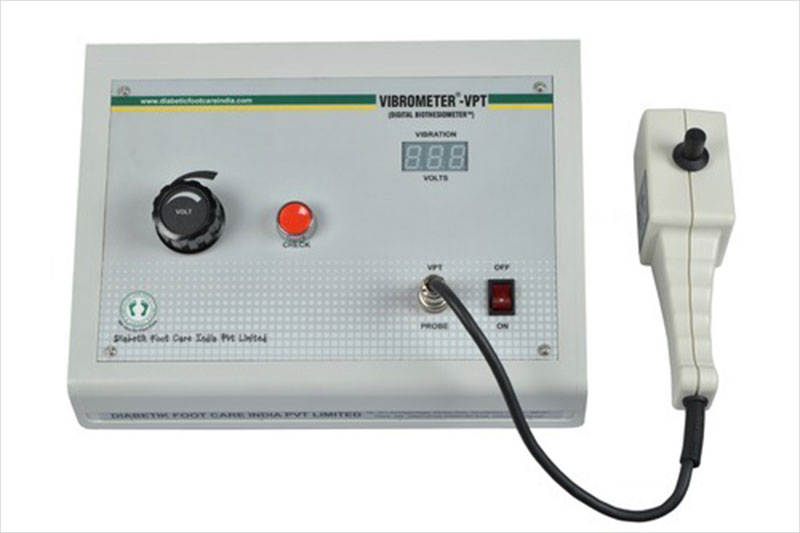Exploring the Biothesiometer Test: A Crucial Tool for Neuropathy Screening at the World Diabetes Centre
- Jahnvi Sharma
- Feb 22, 2024
- 2 min read
Introduction: In the realm of diabetes care, early detection and management of complications such as neuropathy are paramount. At the forefront of comprehensive diabetes management, the World Diabetes Centre (WDC) employs advanced diagnostic tools to screen for neuropathy and mitigate its impact on patients' lives. One such tool is the biothesiometer test, a non-invasive and reliable method for assessing vibratory perception threshold. In this blog post, we delve into the significance of the biothesiometer test at the WDC, its role in neuropathy screening, and its contribution to enhancing patient care.
Understanding Neuropathy in Diabetes: Neuropathy, a common complication of diabetes, involves damage to the nerves, leading to symptoms such as numbness, tingling, burning sensations, and loss of sensation in the extremities. Diabetic Neuropathy poses significant health risks, including foot ulcers, infections, and limb amputations if left untreated. Early detection and intervention are crucial in preventing the progression of neuropathy and minimizing its complications.
The Biothesiometer Test: An Overview: The Biothesiometer is a specialized medical device used to assess vibratory perception threshold, which reflects the sensitivity of peripheral nerves to vibration stimuli. During the test, a vibrating probe is applied to specific points on the patient's skin, typically over bony prominences such as the great toe or the medial malleolus. The intensity of the vibration is gradually increased until the patient perceives the sensation. The vibratory perception threshold is then measured in volts (V) or micrometers (μm), with higher values indicating decreased sensitivity and potential nerve damage.
Importance of the Biothesiometer Test at the WDC: At the WDC, the Biothesiometer Test plays a crucial role in the comprehensive assessment of diabetic neuropathy. By quantifying vibratory perception threshold, healthcare providers can detect early signs of nerve damage, even before clinical symptoms manifest. This early detection allows for timely intervention and preventive measures to halt the progression of neuropathy and mitigate its associated complications.
Advantages of the Biothesiometer Test: The biothesiometer offers several advantages as a screening tool for diabetic neuropathy:
Non-invasive: The test is painless and non-invasive, making it well-tolerated by patients of all ages.
Objective Measurement: The vibratory perception threshold is quantitatively measured, providing objective data for assessing nerve function.
Early Detection: The biothesiometer can detect subtle changes in nerve sensitivity, enabling early intervention before irreversible nerve damage occurs.
Monitoring Progression: Serial biothesiometer measurements allow healthcare providers to monitor changes in nerve sensitivity over time and adjust treatment plans accordingly.
Integration into Diabetes Care at the WDC: The biothesiometer test is seamlessly integrated into routine neuropathy screenings at the WDC, allowing healthcare providers to identify patients at risk of diabetic neuropathy and implement targeted interventions. Combined with comprehensive foot examinations, vascular assessments, and patient education, the biothesiometer test forms an integral part of the WDC's holistic approach to diabetes care.
Conclusion: The biothesiometer test stands as a valuable tool for neuropathy screening and risk stratification in individuals with diabetes at the World Diabetes Centre. Through early detection and proactive management of diabetic neuropathy, healthcare providers at the WDC strive to minimize the burden of this debilitating complication and improve the quality of life for patients. By leveraging advanced diagnostic technologies like the biothesiometer, the WDC remains at the forefront of diabetes care, driving innovation and excellence in patient-centered healthcare.


Comments